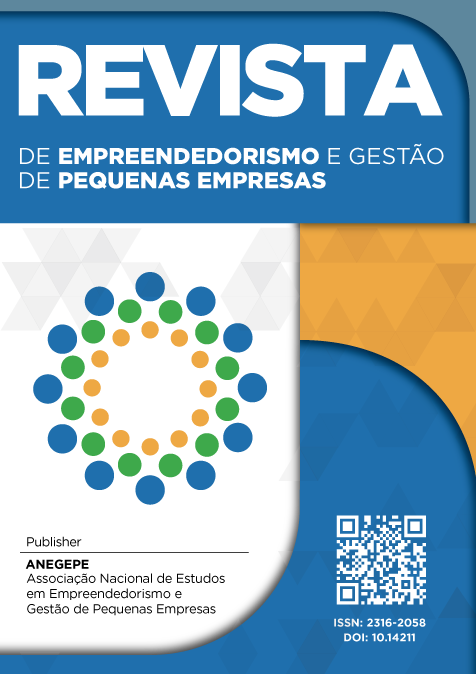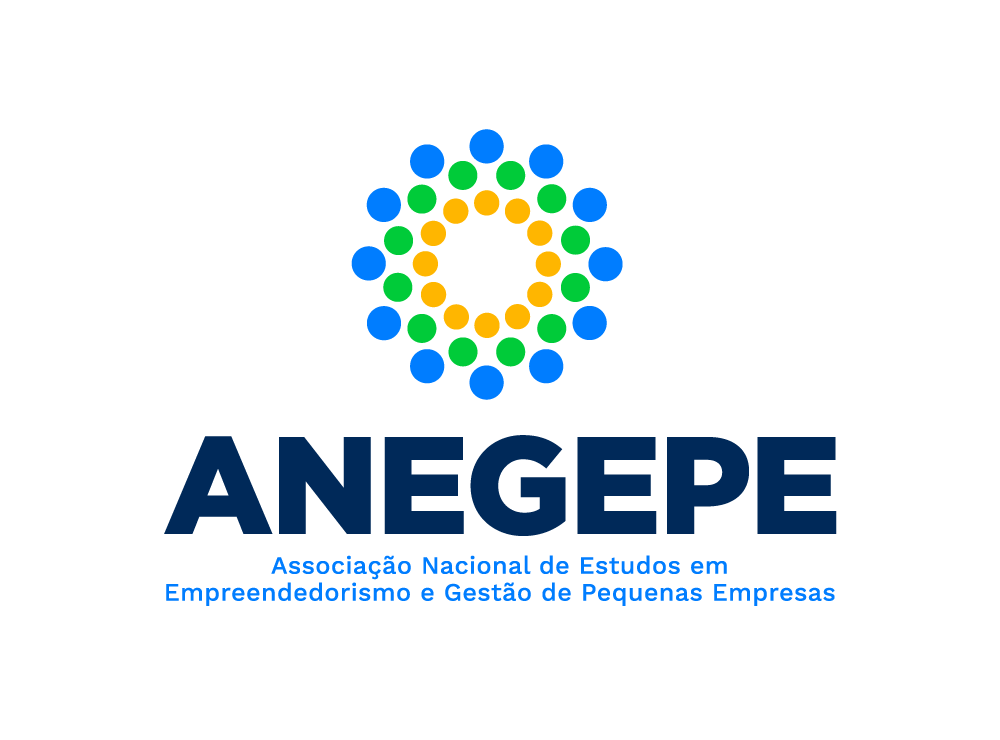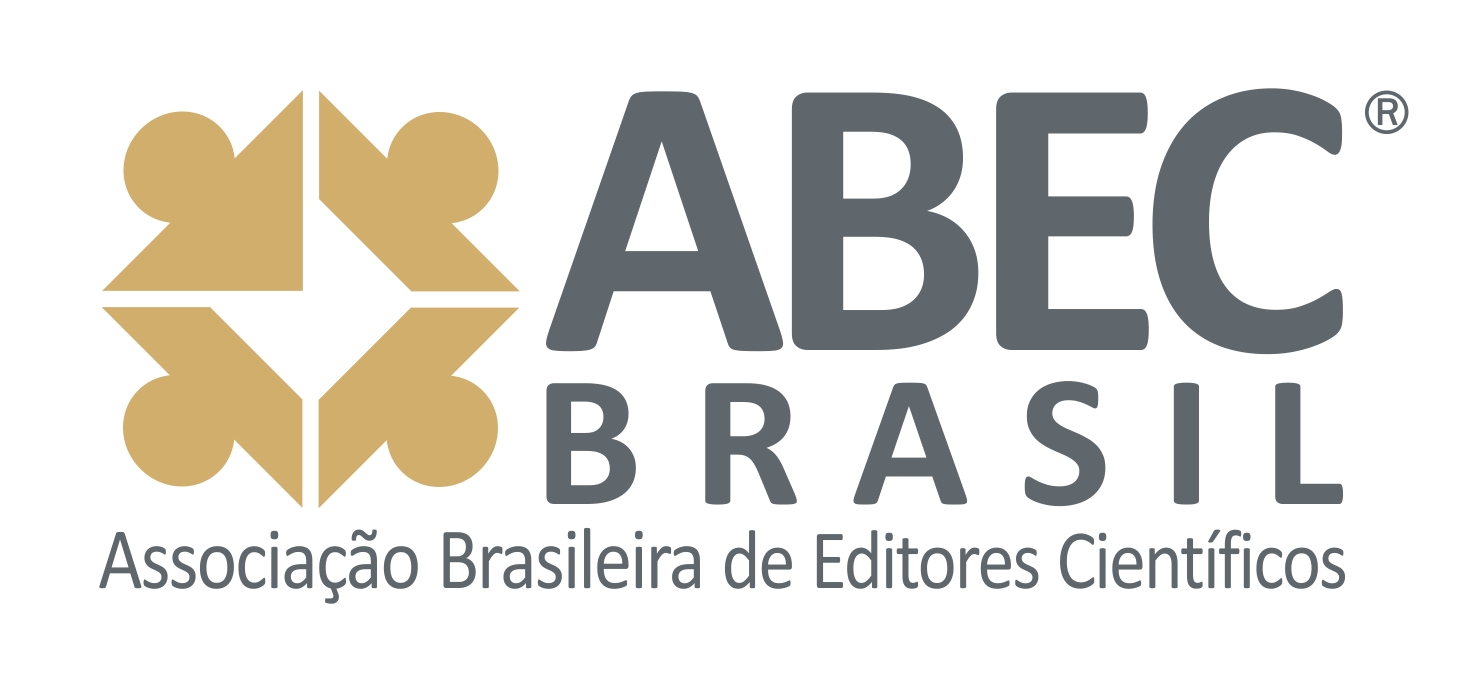Priorização de Stakeholders em Empresas Familiares: Um Ensaio Teórico
DOI:
10.14211/regepe.v9i3.1532Palavras-chave:
Stakeholders, Saliência de stakeholders, Empresas familiaresResumo
Objetivo do estudo: identificar os fatores que influenciam a priorização de stakeholders em empresas familiares.
Metodologia/Abordagem: para a condução do estudo, foi desenvolvido um ensaio teórico, baseado no “modelo de saliência de stakeholders”, que aborda critérios de priorização, e no “modelo de três círculos”, que apresenta as interseções entre família, gestão e propriedade, peculiares em empresas familiares.
Principais resultados: os resultados apontam a saliência de três grupos de stakeholders internos na empresa familiar (o fundador, os membros da próxima geração e os funcionários sem vínculo familiar), a partir dos atributos de poder, de legitimidade e de urgência, e considerando a simultaneidade dos papéis desempenhados.
Contribuições teóricas: o estudo contribui para a gestão e a priorização de stakeholders, por considerar as semelhanças e as diferenças entre empresas familiares e não familiares; e por incluir o atributo “simultaneidade de papéis” como fator de influência importante nesse fenômeno.
Relevância/Originalidade: a inclusão do atributo “simultaneidade de papéis” é relevante para o avanço da “teoria dos stakeholders”, no contexto de empresas familiares, pois oferece maior abrangência e precisão ao modelo de saliência; e o estudo fomenta a discussão sobre como alocar os recursos organizacionais diante das diversas demandas existentes.
Downloads
Referências
Agle, B. R., Mitchell, R. K., & Sonnenfeld, J. A. (1999). Who matters to Ceos? An investigation of stakeholder attributes and salience, corporate performance, and Ceo values. Academy of management journal, 42(5), 507-525. https://doi.org/10.2307/256973 DOI: https://doi.org/10.2307/256973
Aldrich, H. E., & Cliff, J. E. (2003). The pervasive effects of family on entrepreneurship: Toward a family embeddedness perspective. Journal of business venturing, 18(5), 573-596. https://doi.org/10.1016/S0883-9026(03)00011-9 DOI: https://doi.org/10.1016/S0883-9026(03)00011-9
Anderson, R. C., & Reeb, D. M. (2003). Founding‐family ownership and firm performance: evidence from the S&P 500. The journal of finance, 58(3), 1301-1328. https://doi.org/10.1111/1540-6261.00567 DOI: https://doi.org/10.1111/1540-6261.00567
Andrade, L. P., Cappelle, M. C. A., Campos, R. C., & Brito, M. J. (2018). “Meu Pai Ainda Está Aqui, nas Pessoas”: Sentidos Subjetivos Nas Relações de Trabalho em uma Empresa Familiar. Regepe, 7(2), 145-169. https://doi.org/10.14211/regepe.v7i2.707 DOI: https://doi.org/10.14211/regepe.v7i2.707
Arrègle, J.-L., Hitt, M., Sirmon, D., & Véry, P. (2007). The development of organizational social capital: Attributes of family firms. Journal of Management Studies, 44(1), 73-95. https://doi.org/10.1111/j.1467-6486.2007.00665.x DOI: https://doi.org/10.1111/j.1467-6486.2007.00665.x
Astrachan, J. H. (2010). Strategy in family business: Toward a multidimensional research agenda. Journal of Family Business Strategy, 1(1), 6-14. https://doi.org/10.1016/j.jfbs.2010.02.001 DOI: https://doi.org/10.1016/j.jfbs.2010.02.001
Atz, V.; Rese, N. (2013). Identificação de elementos culturais na aquisição de uma empresa familiar por um fundo de private equity: um estudo de caso. Regepe, 2(2), 73-91. http://dx.doi.org/10.14211/regepe.v2i2.79 DOI: https://doi.org/10.14211/regepe.v2i2.79
Bammens, Y., Voordeckers, W., & Van Gils, A. (2011). Boards of directors in family businesses: A literature review and research agenda. International Journal of Management Reviews, 13(2), 134-152. https://doi.org/10.1111/j.1468-2370.2010.00289.x DOI: https://doi.org/10.1111/j.1468-2370.2010.00289.x
Berrone, P., Cruz, C., & Gomez-Mejia, L. R. (2012). Socioemotional wealth in family firms: Theoretical dimensions, assessment approaches, and agenda for future research. Family Business Review, 25(3), 258-279. https://doi.org/10.1177/0894486511435355 DOI: https://doi.org/10.1177/0894486511435355
Bhalla, V., Orglmeister, C., & Tong, D. (2016). What makes family businesses in emerging markets so different? BCG Perspectives. Recuperado de https://on.bcg.com/2om1PKi
Bingham, J. B., Dyer, W. G., Smith, I., & Adams, G. L. (2011). A stakeholder identity orientation approach to corporate social performance in family firms. Journal of business ethics, 99(4), 565-585. https://doi.org/10.1007/s10551-010-0669-9 DOI: https://doi.org/10.1007/s10551-010-0669-9
Boaventura, J. M. G., Fontes, L. G. P., Sarturi, G., & Armando, E. (2017). Critérios para Identificação da Saliência de Stakeholders através da Análise de Conteúdo. Future Studies Research Journal: Trends and Strategies, 9(2), 3-29. DOI: https://doi.org/10.24023/FutureJournal/2175-5825/2017.v9i2.261
Boers, B. & Ljungkvist, T. (2019). A founder's heritage: the development of organizational identity. Journal of Small Business & Entrepreneurship, 31(1), 73-95. https://doi.org/10.1080/08276331.2018.1466849 DOI: https://doi.org/10.1080/08276331.2018.1466849
Borges, A. F., Brito, M. J. D., Lima, J. B. D., & Castro, C. L. D. C. (2016). Empreendedorismo em empresas familiares: a pesquisa atual e os desafios futuros. RAM – Revista de Administração Mackenzie, 17(2), 93-121. DOI: https://doi.org/10.1590/1678-69712016/administracao.v17n2p93-121
Brickson, S. L. (2007). Organizational identity orientation: The genesis of the role of the firm and distinct forms of social value. Academy of Management Review, 32(3), 864-888. https://doi.org/10.5465/amr.2007.25275679 DOI: https://doi.org/10.5465/amr.2007.25275679
Cennamo, C., Berrone, P., Cruz, C., & Gomez-Mejia, L. R. (2012). Socioemotional wealth and proactive stakeholder engagement: Why family–controlled firms care more about their stakeholders. Entrepreneurship Theory and Practice, 36(6), 1153-1173. https://doi.org/10.1111/j.1540-6520.2012.00543.x DOI: https://doi.org/10.1111/j.1540-6520.2012.00543.x
Chrisman, J. J., Chua, J. H., Pearson, A. W., & Barnett, T. (2012). Family involvement, family influence, and family‐centered non‐economic goals in small firms. Entrepreneurship theory and practice, 36(2), 267-293. https://doi.org/10.1111/j.1540-6520.2010.00407.x DOI: https://doi.org/10.1111/j.1540-6520.2010.00407.x
Chrisman, J. J., Chua, J. H., & Sharma, P. (2005). Trends and directions in the development of a strategic management theory of the family firm. Entrepreneurship Theory and Practice, 29(5), 555-576. https://doi.org/10.1111/j.1540-6520.2005.00098.x DOI: https://doi.org/10.1111/j.1540-6520.2005.00098.x
Chrisman, J. J., Steier, L. P., & Chua, J. H. (2006). Personalism, particularism, and the competitive behaviors and advantages of family firms: An introduction. Entrepreneurship Theory and Practice, 30(6), 719-729. https://doi.org/10.1111/j.1540-6520.2006.00146.x DOI: https://doi.org/10.1111/j.1540-6520.2006.00146.x
Chua, J. H., Chrisman, J. J., & Sharma, P. (1999). Defining the family business by behavior. Entrepreneurship theory and practice, 23(4), 19-39. https://doi.org/10.1177/104225879902300402 DOI: https://doi.org/10.1177/104225879902300402
Clarkson, M. E. (1995). A stakeholder framework for analyzing and evaluating corporate social performance. Academy of management review, 20(1), 92-117. https://doi.org/10.5465/amr.1995.9503271994 DOI: https://doi.org/10.5465/amr.1995.9503271994
Conte, F., Siano, A., & Vollero, A. (2017). CEO communication: engagement, longevity and founder centrality: an exploratory study in Italy. Corporate Communications: An International Journal, 22(3), 273-291. https://doi.org/10.1108/CCIJ-10-2015-0062 DOI: https://doi.org/10.1108/CCIJ-10-2015-0062
Debicki, B. J., Kellermanns, F. W., Chrisman, J. J., Pearson, A. W., & Spencer, B. A. (2016). Development of a socioemotional wealth importance (SEWi) scale for family firm research. Journal of Family Business Strategy, 7(1), 47-57. https://doi.org/10.1016/j.jfbs.2016.01.002 DOI: https://doi.org/10.1016/j.jfbs.2016.01.002
Dawson, A., & Mussolino, D. (2014). Exploring what makes family firms different: Discrete or overlapping constructs in the literature? Journal of Family Business Strategy, 5(2), 169-183. https://doi.org/10.1016/j.jfbs.2013.11.004 DOI: https://doi.org/10.1016/j.jfbs.2013.11.004
Dawson, A., Paeglis, I., & Basu, N. (2018). Founder as Steward or Agent? A Study of Founder Ownership and Firm Value. Entrepreneurship Theory and Practice, 42(6), 886-910. https://doi.org/10.1177/1042258717725522 DOI: https://doi.org/10.1177/1042258717725522
Eesley, C., & Lenox, M. J. (2006). Firm responses to secondary stakeholder action. Strategic Management Journal, 27(8), 765-781. https://doi.org/10.1002/smj.536 DOI: https://doi.org/10.1002/smj.536
Etzioni, A. (1964). Modem organizations. Englewood Cliffs, NJ: Prentice Hall.
Freeman, R. E. (1984). Strategic Management: a stakeholder approach. Boston: Pitman.
Frezatti, F., Bido, D. de S., Mucci, D. M., & Beck, F. (2017). Estágios do ciclo de vida e perfil de empresas familiares brasileiras. era – Revista de Administração de Empresas, 57(6), 601-619. DOI: https://doi.org/10.1590/s0034-759020170607
Gavana, G., Gottardo, P., & Moisello, A. (2016). Sustainability reporting in family firms: A panel data analysis. Sustainability, 9(1), 38. https://doi.org/10.3390/su9010038 DOI: https://doi.org/10.3390/su9010038
Gomez-Mejia, L. R., Cruz, C., Berrone, P., & Castro, J. (2011). The bind that ties: Socioemotional wealth preservation in family firms. Academy of Management Annals, 5(1), 653-707. https://doi.org/10.5465/19416520.2011.593320 DOI: https://doi.org/10.5465/19416520.2011.593320
Gomez-Mejia, L. R., Haynes, K. T., Núñez-Nickel, M., Jacobson, K. J., & Moyano-Fuentes, J. (2007). Socioemotional wealth and business risks in family-controlled firms: Evidence from Spanish olive oil mills. Administrative science quarterly, 52(1), 106-137. https://doi.org/10.2189/asqu.52.1.106 DOI: https://doi.org/10.2189/asqu.52.1.106
Harrison, J. S., Bosse, D. A., & Phillips, R. A. (2010). Managing for stakeholders, stakeholder utility functions, and competitive advantage. Strategic management journal, 31(1), 58-74. https://doi.org/10.1002/smj.801 DOI: https://doi.org/10.1002/smj.801
Harrison, J. S., & John, C. H. (1996). Managing and partnering with external stakeholders. Academy of Management Perspectives, 10(2), 46-60. https://doi.org/10.5465/ame.1996.9606161554 DOI: https://doi.org/10.5465/ame.1996.9606161554
Holt, D. T., Pearson, A. W., Carr, J. C., & Barnett, T. (2017). Family firm(s) outcomes model: Structuring financial and nonfinancial outcomes across the family and firm. Family Business Review, 30(2), 182-202. https://doi.org/:10.1177/0894486516680930 DOI: https://doi.org/10.1177/0894486516680930
Hou, T. C. T. (2019). The relationship between corporate social responsibility and sustainable financial performance: Firm‐level evidence from Taiwan. Corporate Social Responsibility and Environmental Management, 26(1), 19-28. https://doi-org.ez47.periodicos.capes.gov.br/10.1002/csr.1647 DOI: https://doi.org/10.1002/csr.1647
Lescura, C., Brito, M. J., Borges, A. F., & Cappelle, M. C.A. (2012). Representações sociais sobre as relações de parentesco: estudo de caso em um grupo empresarial familiar. RAC – Revista de Administração Contemporânea, 16(1), 98-117.https://doi.org/10.1590/S1415-65552012000100007 DOI: https://doi.org/10.1590/S1415-65552012000100007
Lubatkin, M. H., Schulze, W. S., Ling, Y., & Dino, R. N. (2005). The effects of parental altruism on the governance of family managed firms. Journal of Organizational Behavior, 26(3), 313-330. https://doi.org/10.1002/job.307 DOI: https://doi.org/10.1002/job.307
Magness, V. (2008). Who are the stakeholders now? An empirical examination of the Mitchell, Agle, and Wood theory of stakeholder salience. Journal of business ethics, 83(2), 177-192. https://doi.org/10.1007/s10551-007-9610-2 DOI: https://doi.org/10.1007/s10551-007-9610-2
Meneghetti, F. K. (2011). O que é um ensaio-teórico? Revista de Administração Contemporânea, 15(2), 320-332.
https://doi.org/10.1590/S1415-65552011000200010 DOI: https://doi.org/10.1590/S1415-65552011000200010
Micelotta, E. R., & Raynard, M. (2011). Concealing of revealing the family? Corporate brand identity strategies in family firms. Family Business Review, 24(3), 197-216. https://doi.org/10.1177/0894486511407321 DOI: https://doi.org/10.1177/0894486511407321
Miller, D., & Le Breton-Miller, I. (2014). Deconstructing socioemotional wealth. Entrepreneurship Theory and Practice, 38(4), 713-720. https://doi.org/10.1111/etap.12111 DOI: https://doi.org/10.1111/etap.12111
Miller, D., Le Breton-Miller, I., & Scholnick, B. (2008). Stewardship vs. stagnation: An empirical comparison of small family and non-family businesses. Journal of Management Studies, 45(1), 50-78. https://doi.org/10.1111/j.1467-6486.2007.00718.x DOI: https://doi.org/10.1111/j.1467-6486.2007.00718.x
Mitchell, R. K., Agle, B. R., & Wood, D. J. (1997). Toward a theory of stakeholder identification and salience: Defining the principle of who and what really counts. Academy of management review, 22(4), 853-886. https://doi.org/10.5465/amr.1997.9711022105 DOI: https://doi.org/10.5465/amr.1997.9711022105
Mitchell, R. K., Agle, B. R., Chrisman, J. J., & Spence, L. J. (2011). Toward a theory of stakeholder salience in family firms. Business Ethics Quarterly, 21(2), 235-255. https://doi.org/10.5840/beq201121215 DOI: https://doi.org/10.5840/beq201121215
Neubaum, D. O., Dibrell, C., & Craig, J. B. (2012). Balancing natural environmental concerns of internal and external stakeholders in family and non-family businesses. Journal of Family Business Strategy, 3(1), 28-37. https://doi.org/10.1016/j.jfbs.2012.01.003 DOI: https://doi.org/10.1016/j.jfbs.2012.01.003
Parent, M. M., & Deephouse, D. L. (2007). A case study of stakeholder identification and prioritization by managers. Journal of business ethics, 75(1), 1-23. https://doi.org/10.1007/s10551-007-9533-y DOI: https://doi.org/10.1007/s10551-007-9533-y
Payne, G. T., Brigham, K. H., Broberg, J. C., Moss, T. W., & Short, J. C. (2011). Organizational virtue orientation and family firms. Business Ethics Quarterly, 21(2), 257-285. https://doi.org/10.5840/beq201121216 DOI: https://doi.org/10.5840/beq201121216
Piszczek, M. M., Dearmond, S., & Feinauer, D. (2018). Employee work-to-family role boundary management in the family business. Community, Work & Family, 21(2), 111-132. https://doi.org/10.1080/13668803.2017.1366297 DOI: https://doi.org/10.1080/13668803.2017.1366297
Phillips, R. (2003). Stakeholder theory and organizational ethics. San Francisco, Califórnia: Berrett-Koehler Publishers.
Phillips, R., Freeman, R. E., & Wicks, A. C. (2003). What stakeholder theory is not. Business ethics quarterly, 13(4), 479-502. https://doi.org/10.5840/beq200313434 DOI: https://doi.org/10.5840/beq200313434
Reynolds, S. J., Owens, B. P., & Rubenstein, A. L. (2012). Moral stress: Considering the nature and effects of managerial moral uncertainty. Journal of Business Ethics, 106(4), 491-502. https://doi.org/10.1007/s10551-011-1013-8 DOI: https://doi.org/10.1007/s10551-011-1013-8
Santos, W. R., & Carneiro, T. C. J. (2013). Inovação e desempenho organizacional: um estudo das publicações científicas da base Web of Knowledge. Revista Pensamento Contemporâneo em Administração, 7(4), 58-76. DOI: https://doi.org/10.12712/rpca.v7i4.271
Sarturi, G., de Mascena, K. M. C., Boaventura, J. M. G., & Pilli, L. E. (2018). Relação entre Saliência de Stakeholders e Desempenho Financeiro. Revista Contabilidade, Gestão e Governança, 21(2), 214-230. http://dx.doi.org/10.21714/1984-3925_2018v21n2a4 DOI: https://doi.org/10.21714/1984-3925_2018v21n2a4
Schulze, W. S., Lubatkin, M. H., Dino, R. N., & Buchholtz, A. K. (2001). Agency relationships in family firms: Theory and evidence. Organization Science, 12(2), 99-116. https://doi.org/10.1287/orsc.12.2.99.10114 DOI: https://doi.org/10.1287/orsc.12.2.99.10114
Singh, S., & Mittal, S. (2019). Analysis of drivers of CSR practices’ implementation among family firms in India: A stakeholder’s perspective. International Journal of Organizational Analysis, 27(4), 947-971. https://doi.org/10.1108/IJOA-09-2018-1536 DOI: https://doi.org/10.1108/IJOA-09-2018-1536
Sharma, P. (2002, August). Stakeholder mapping technique: Toward the development of a family firm typology. In Meeting of the Academy of Management, Denver, Colorado, EUA, 62.
Sharma, P. (2004). An overview of the field of family business studies: Current status and directions for the future. Family business review, 17(1), 1-36. https://doi.org/10.1111/j.1741-6248.2004.00001.x DOI: https://doi.org/10.1111/j.1741-6248.2004.00001.x
Sharma, P., & Sharma, S. (2011). Drivers of proactive environmental strategy in family firms. Business Ethics Quarterly, 21(2), 309-334. https://doi.org/10.5840/beq201121218 DOI: https://doi.org/10.5840/beq201121218
Suchman, M. C. (1995). Managing legitimacy: Strategic and institutional approaches. Academy of management review, 20(3), 571-610. https://doi.org/10.5465/amr.1995.9508080331 DOI: https://doi.org/10.5465/amr.1995.9508080331
Tagiuri, R., & Davis, J. (1996). Bivalent attributes of the family firm. Family business review, 9(2), 199-208. https://doi.org/10.1111/j.1741-6248.1996.00199.x DOI: https://doi.org/10.1111/j.1741-6248.1996.00199.x
Zellweger, T. M., & Nason, R. S. (2008). A stakeholder perspective on family firm performance. Family Business Review, 21(3), 203-216. https://doi.org/10.1177/08944865080210030103 DOI: https://doi.org/10.1177/08944865080210030103
Downloads
Publicado
Métricas
Visualizações do artigo: 991 PDF downloads: 398 PDF (English) downloads: 363
Como Citar
Edição
Seção
Licença
Autores que publicam nesta revista concordam com os seguintes termos:
- O(s)/A(s) autor(es)/autora(s) autorizam a publicação do texto na revista;
- A revista não se responsabiliza pelas opiniões, ideias e conceitos emitidos nos textos, por serem de inteira responsabilidade de seus autores/autoras;
- Autores/autoras mantêm os direitos autorais e concedem à revista o direito de primeira publicação, com o trabalho publicado sob a Licença CC BY 4.0
, que permite o compartilhamento do trabalho com reconhecimento da autoria e publicação inicial nesta revista;
- Autores/autoras são permitidos e encorajados a postar seu trabalho (Versão submetida, Versão aceita [Manuscrito aceito pelo autor/autora] ou Versão publicada [Versão do registro]) online, por exemplo, em repositórios institucionais ou preprints, pois isso pode levar a trocas produtivas, bem como a citações anteriores e maiores de trabalhos publicados. A REGEPE pede como condição política para os autores/autoras que indiquem/vinculem o artigo publicado com DOI. Veja o Efeito do Acesso Livre.















